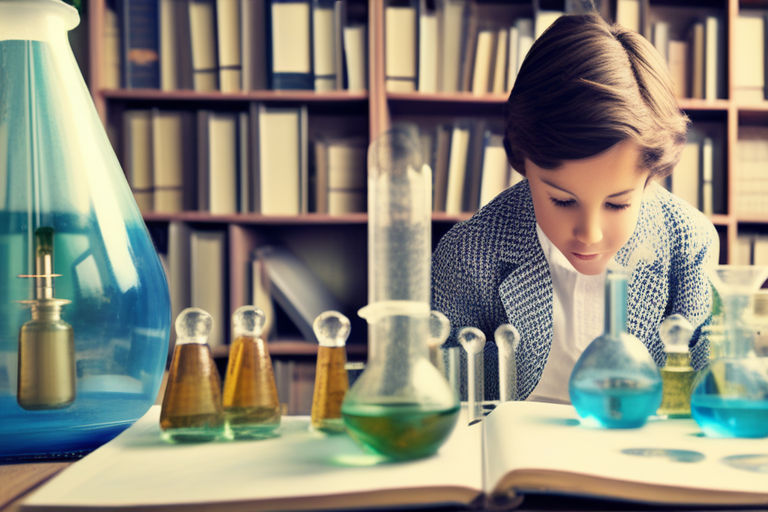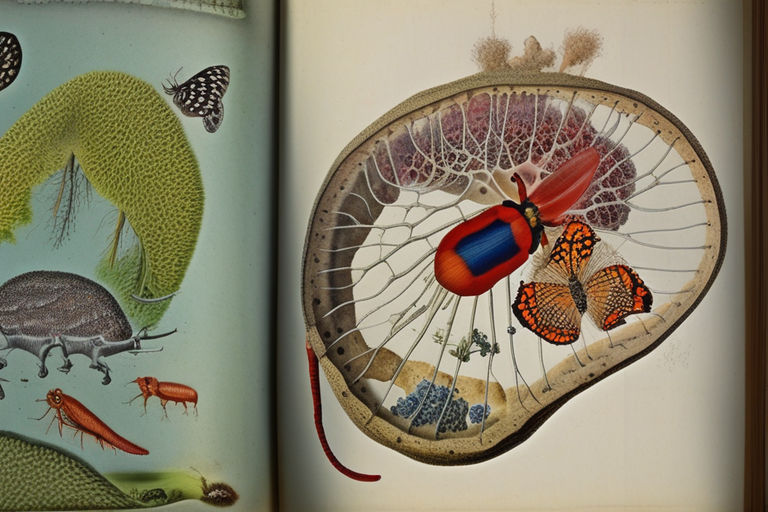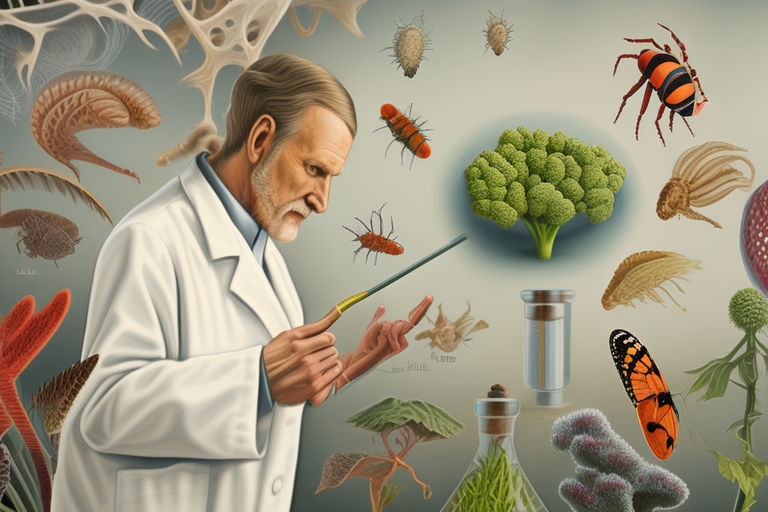
- Branches of Biology
- Importance of Biology
- What Does Biology Study?
- The Key Concepts in Biology: From Cells to Ecosystems
- Cell Biology
- Molecular Biology
- Genetics
- Evolution
- Ecology
- Anatomy
- Physiology
- The Role of Biology in Advancing Medical Science and Healthcare
- Medical Biology: Understanding the Foundation of Health and Disease
- Healthcare Advancements through Biology Research
- Biotechnology in Medicine: A Revolution in Healthcare
- The Future of Healthcare: Integrating Biology and Technology
- Biology and its Impact on the Environment and Conservation Efforts
- Environmental Biology: Understanding Ecosystems and Ecological Processes
- Conservation Biology: Preserving Biodiversity and Ecosystems
- Biodiversity Preservation: The Essence of Life on Earth
- Human Impact on Biodiversity and the Environment
- Biology's Role in Mitigating Environmental Challenges
- The Future of Conservation and Biodiversity Preservation
- The Interdisciplinary Nature of Biology: Exploring Connections with Other Sciences
- Biochemistry: Bridging the Gap between Biology and Chemistry
- Biophysics: Exploring Biological Processes through Physical Principles
- Bioinformatics: Harnessing Computational Tools for Biological Insights
- Microbiology: Unlocking the World of Microscopic Organisms
Branches of Biology
Importance of Biology

What Does Biology Study?
The Key Concepts in Biology: From Cells to Ecosystems
Cell Biology

Molecular Biology
Genetics
Evolution
Ecology
Anatomy
Physiology
The Role of Biology in Advancing Medical Science and Healthcare
Medical Biology: Understanding the Foundation of Health and Disease

Healthcare Advancements through Biology Research
Biotechnology in Medicine: A Revolution in Healthcare
The Future of Healthcare: Integrating Biology and Technology
The intersection of biology and technology continues to shape the future of healthcare in exciting ways:
- Artificial Intelligence (AI) in Medicine: AI, fueled by biological data, can analyze vast datasets, predict disease trends, and assist in diagnosis and treatment decisions.
- Telemedicine: Advances in biology and information technology have facilitated remote healthcare consultations, making healthcare more accessible and convenient.
- Biomarker Discovery: Biology research is uncovering new biomarkers that can aid in early disease detection and monitoring treatment responses.
- Nanomedicine: Nano-sized drug delivery systems, informed by biology, are being developed to target specific cells or tissues, improving drug efficacy and reducing side effects.
- Bioinformatics: The integration of biology and computational methods is advancing our ability to analyze biological data, from genomics to proteomics, paving the way for personalized medicine.
- Synthetic Biology: This emerging field allows for the design and construction of biological systems for various applications, including the production of biofuels, pharmaceuticals, and biosensors.
In conclusion, biology serves as the foundation upon which medical science and healthcare advancements are built. From the understanding of the human body’s intricate biology to the application of biotechnology, biology is instrumental in diagnosing, treating, and preventing diseases. The ongoing integration of biology and technology holds the promise of even greater healthcare innovations, offering hope for improved patient outcomes, increased accessibility to healthcare, and a brighter future for global health. As the boundaries of biological knowledge continue to expand, so too will our capacity to transform healthcare and enhance the quality of life for individuals around the world.
Biology and its Impact on the Environment and Conservation Efforts
Biology, the scientific study of life and living organisms, is intricately connected to the environment. It provides critical insights into the natural world, the delicate balance of ecosystems, and the intricate web of life on our planet. In this comprehensive article, we will explore the profound impact of biology on the environment and conservation efforts, focusing on environmental biology, conservation biology, and the preservation of biodiversity.
Environmental Biology: Understanding Ecosystems and Ecological Processes
Environmental biology is a sub-discipline of biology that concentrates on the study of the environment, ecosystems, and the interactions between living organisms and their surroundings. It is central to our understanding of the natural world and the ecological processes that sustain life on Earth. Key aspects of environmental biology include:
- Ecosystem Dynamics: Environmental biology investigates the dynamics of ecosystems, including energy flow, nutrient cycling, and the roles of different species within these complex systems.
- Biotic and Abiotic Factors: It explores the interactions between living organisms (biotic factors) and their non-living environment (abiotic factors), such as temperature, water, and soil composition.
- Ecological Niches: Understanding the ecological niches of species—how they fit into their environments—helps predict their ecological roles and potential impacts on the ecosystem.
- Biodiversity: Environmental biology assesses the diversity of life within ecosystems, from the variety of species to genetic diversity within populations.
- Conservation: It plays a crucial role in informing conservation strategies by identifying endangered species, understanding their habitats, and studying the impact of human activities on ecosystems.
Conservation Biology: Preserving Biodiversity and Ecosystems
Conservation biology is a specialized field of biology dedicated to the protection, preservation, and restoration of biodiversity and the natural environment. It addresses the urgent need to mitigate the loss of species and ecosystems due to various threats, including habitat destruction, climate change, pollution, and overexploitation. Key aspects of conservation biology include:
- Biodiversity Conservation: Conservation biology focuses on preserving the richness of life on Earth by protecting species, populations, and genetic diversity.
- Habitat Conservation: It emphasizes safeguarding and restoring critical habitats, such as forests, wetlands, coral reefs, and grasslands, which are essential for numerous species’ survival.
- Endangered Species: Conservation biologists work to identify and protect endangered species, as well as implement breeding and reintroduction programs to boost their populations.
- Ecosystem Services: Conservation biology recognizes the essential services provided by ecosystems, such as clean air and water, pollination, and carbon sequestration, and seeks to maintain these services for human well-being.
- Human Impact: It examines the impacts of human activities on the environment and strives to find sustainable solutions that balance the needs of people with the conservation of nature.
Biodiversity Preservation: The Essence of Life on Earth
Biodiversity, the variety of life on Earth, is a cornerstone of the natural world. It encompasses the diversity of species, genetic variation within populations, and the variety of ecosystems and habitats. Biodiversity is not only beautiful and awe-inspiring but also essential for the functioning of ecosystems and the well-being of human societies. Here’s why biodiversity preservation is of paramount importance:
- Ecosystem Stability: Biodiverse ecosystems are more stable and resilient, better able to withstand environmental changes, such as disease outbreaks or extreme weather events.
- Food Security: Biodiversity is crucial for food production, providing a variety of crops and livestock that support human diets and livelihoods.
- Medicinal Resources: Many medicines and pharmaceuticals are derived from plants, animals, and microorganisms found in diverse ecosystems.
- Climate Regulation: Biodiverse forests and oceans act as carbon sinks, helping regulate the Earth’s climate by absorbing and storing carbon dioxide.
- Pollination: Biodiversity, particularly pollinators like bees, plays a vital role in pollinating crops and ensuring agricultural productivity.
- Cultural and Aesthetic Value: Biodiversity enriches human culture, offering inspiration, spiritual value, and opportunities for recreation and tourism.
Human Impact on Biodiversity and the Environment
Human activities have had profound and often detrimental effects on the environment and biodiversity. These impacts include:
- Habitat Destruction: Deforestation, urbanization, and agriculture have led to the loss of natural habitats, pushing many species to the brink of extinction.
- Pollution: Pollution from industrial processes, agriculture, and transportation has contaminated air, water, and soil, harming both ecosystems and human health.
- Overexploitation: The overharvesting of natural resources, such as overfishing and poaching, has depleted populations of numerous species.
- Climate Change: Human-induced climate change, driven by the burning of fossil fuels and deforestation, disrupts ecosystems and threatens species adapted to specific temperature ranges.
- Invasive Species: The introduction of non-native species to new environments can disrupt native ecosystems and outcompete or prey on native species.
Biology’s Role in Mitigating Environmental Challenges
Biology is instrumental in addressing these environmental challenges and promoting conservation efforts. Here’s how biology contributes to mitigating environmental issues:
- Scientific Understanding: Biology provides the knowledge and tools to understand ecosystems, species interactions, and the impacts of human activities on the environment.
- Conservation Strategies: Conservation biology informs the development of strategies to protect and restore biodiversity, including habitat restoration and captive breeding programs.
- Sustainable Practices: Biological research guides the development of sustainable agricultural, forestry, and fisheries practices that minimize environmental harm.
- Technological Advancements: Advances in biology and biotechnology facilitate the monitoring of ecosystems, such as through DNA analysis and remote sensing.
- Policy and Advocacy: Biologists play a crucial role in advocating for environmental protection and influencing policy decisions at local, national, and international levels.
The Future of Conservation and Biodiversity Preservation
As we face mounting environmental challenges, the role of biology in conservation and biodiversity preservation has never been more critical. The future of these efforts will rely on interdisciplinary collaboration, innovative technologies, and a shared commitment to sustainable practices. Some key areas of focus for the future include:
- Restoration Ecology: The restoration of damaged ecosystems and habitats to their natural state is a growing field that aims to revitalize biodiversity.
- Conservation Genetics: Advances in genetics enable the identification of genetically distinct populations and guide breeding and reintroduction efforts.
- Global Collaboration: International cooperation is essential for conserving migratory species and addressing global environmental issues, such as climate change.
- Community Engagement: Engaging local communities in conservation efforts and respecting traditional ecological knowledge can enhance conservation outcomes.
- Educational Initiatives: Raising awareness and educating the public about the importance of biodiversity and environmental conservation is crucial for fostering a culture of conservation.
In conclusion, biology’s profound impact on the environment and conservation efforts cannot be overstated. It provides the scientific foundation for understanding the natural world, identifying threats to biodiversity, and developing strategies to protect our planet’s ecosystems and species. The preservation of biodiversity is not only a moral imperative but also essential for the well-being of future generations. Through continued research, education, and concerted global efforts, biology will remain at the forefront of our quest to safeguard the environment and preserve the rich tape.
The Interdisciplinary Nature of Biology: Exploring Connections with Other Sciences
Biology, the scientific study of life and living organisms, is a multifaceted field that often collaborates closely with other scientific disciplines to expand our understanding of the natural world. Interdisciplinary connections are at the heart of scientific progress, and biology is no exception. In this comprehensive article, we will explore the interdisciplinary nature of biology by examining its connections with other sciences, including biochemistry, biophysics, bioinformatics, and microbiology.
Biochemistry: Bridging the Gap between Biology and Chemistry
Biochemistry is the branch of science that explores the chemical processes and substances occurring within living organisms. It serves as a bridge between biology and chemistry, providing critical insights into the molecular foundations of life. Key aspects of the intersection between biology and biochemistry include:
- Molecular Biology: Biochemistry plays a pivotal role in molecular biology, helping researchers understand the structure and function of biomolecules like DNA, RNA, and proteins. It explores processes such as transcription, translation, and DNA replication, elucidating how genetic information is stored, transmitted, and expressed.
- Enzyme Function: Enzymes, which are biological catalysts, are central to many cellular processes. Biochemistry investigates the mechanisms by which enzymes catalyze reactions and regulate metabolic pathways.
- Metabolism: Biochemistry examines metabolic pathways and energy production in living organisms. It sheds light on how cells extract energy from nutrients and how metabolic dysregulation can lead to diseases like diabetes.
- Protein Structure: Understanding protein structure at the molecular level is essential for elucidating their functions. Biochemistry contributes to structural biology, revealing how proteins fold, interact, and carry out their roles in cells.
Biophysics: Exploring Biological Processes through Physical Principles
Biophysics is an interdisciplinary field that applies the principles of physics to biological systems. It seeks to uncover the physical mechanisms underlying biological processes and phenomena. The intersection of biology and biophysics includes:
- Cell Biophysics: Biophysics examines the mechanical properties of cells, such as their elasticity and viscoelastic behavior. This knowledge is crucial for understanding processes like cell migration, division, and response to mechanical forces.
- Membrane Transport: Biophysics investigates the movement of ions and molecules across cell membranes, addressing questions related to ion channels, active transport, and membrane potential.
- Molecular Forces: Understanding the forces that govern interactions between biomolecules, such as van der Waals forces, hydrogen bonding, and electrostatic interactions, is essential for unraveling processes like protein-protein binding and DNA helix stability.
- Biomechanics: Biophysics explores the biomechanics of living organisms, from the mechanics of bone and muscle to the fluid dynamics of blood flow and the locomotion of animals.
Bioinformatics: Harnessing Computational Tools for Biological Insights
Bioinformatics is a cross-disciplinary field that combines biology with computer science and data analysis. It deals with the collection, storage, retrieval, and analysis of biological data, and it plays a crucial role in modern biology in several ways:
- Genomics: Bioinformatics is integral to genomics, the study of an organism’s entire genetic makeup. It involves the sequencing and analysis of genomes, allowing us to understand the genetic basis of traits and diseases.
- Proteomics: Bioinformatics helps analyze large datasets of proteins, allowing researchers to identify their functions, interactions, and roles in cellular processes.
- Phylogenetics: It assists in the reconstruction of evolutionary relationships among species by analyzing genetic and molecular data, leading to insights into evolutionary history and biodiversity.
- Structural Biology: Bioinformatics aids in the prediction and analysis of protein structures, which is valuable for drug discovery and understanding disease mechanisms.
- Metagenomics: This field involves the analysis of genetic material from environmental samples. Bioinformatics tools are essential for deciphering the genetic diversity of microbial communities in various ecosystems.
Microbiology: Unlocking the World of Microscopic Organisms
Microbiology is the branch of biology that focuses on the study of microorganisms, including bacteria, viruses, fungi, and protists. Microbiology has deep connections with biology in several ways:
- Infectious Diseases: Microbiology plays a crucial role in understanding the pathogens responsible for infectious diseases. It involves the identification, characterization, and treatment of disease-causing microorganisms.
- Biotechnology: Microorganisms are essential in biotechnology for processes like fermentation, genetic engineering, and the production of pharmaceuticals, enzymes, and biofuels.
- Environmental Microbiology: This field examines the roles of microorganisms in various ecosystems, including their contributions to nutrient cycling, degradation of pollutants, and soil health.
- Microbial Genetics: Microbiology explores the genetics of microorganisms, including the mechanisms of genetic exchange, antibiotic resistance, and microbial evolution.
- Virology: Virology, a subfield of microbiology, focuses on the study of viruses, their replication, and their interactions with host organisms. It has significant implications for human health and biotechnology.
The interdisciplinary nature of biology, as exemplified by its connections with biochemistry, biophysics, bioinformatics, and microbiology, highlights the diverse and collaborative nature of scientific research. These connections are essential for expanding our knowledge of the living world, addressing complex biological questions, and developing innovative solutions to challenges in health, agriculture, and environmental conservation. As scientific boundaries continue to blur, interdisciplinary approaches will likely become even more critical for advancing our understanding of the intricacies of life on Earth.



It is perfect time to make a few plans for the longer term and it is
time to be happy. I’ve learn this post and if I may just I wish
to counsel you few interesting issues or suggestions. Perhaps you
could write next articles referring to this article.
I desire to read even more things approximately it!